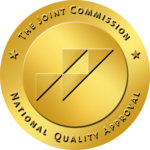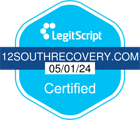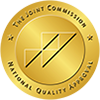Social media platforms have become integral to daily life, particularly for teens. While these platforms connect people and provide entertainment, they also expose teens to influences that can shape their behaviors, including how they perceive substance use. Online trends that glamorize or trivialize drug and alcohol use can create a dangerous path for teens, blurring the lines between entertainment and harmful behaviors.
Knowing the impact social media has on substance use is key to helping teens navigate these platforms responsibly. Parents, educators, and healthcare providers play critical roles in identifying and addressing the risks associated with the media.

How Social Media Influences Teen Behavior
Social media platforms like TikTok, Instagram, and Snapchat are designed to capture attention and encourage engagement. The algorithms behind these platforms prioritize viral content, meaning teens are constantly exposed to whatever is trending—good or bad.
The Normalization of Substance Use
One of the most concerning aspects of social media is how it normalizes substance use. Teens are highly impressionable, and when they see influencers, celebrities, or even peers engaging in activities like drinking or using drugs, it can appear as a regular or even desirable part of life. This can include:
- Posts showing parties with alcohol or drugs: Teens may view these images as symbols of popularity or fun.
- Viral challenges involving substances: Dangerous trends, like drinking games or experimenting with over-the-counter medications, can encourage imitation.
- Memes and humor around substance use: Jokes about excessive drinking or drug use can desensitize teens to the risks.
The Power of Peer Influence
Social media amplifies peer influence, making it even harder for teens to resist the pressures to fit in. Likes, comments, and shares can create a feedback loop where teens feel validated for imitating risky behaviors. The desire for social approval can drive them to participate in trends that they wouldn’t consider otherwise.
Are Online Trends Encouraging Substance Abuse?
Yes, online trends can encourage substance use, either directly or indirectly. Some trends involve explicit substance use, while others normalize risky behavior through humor or challenges. Here are examples of how this occurs:
Viral Challenges
Challenges are a hallmark of social media. While many are harmless or fun, some cross into dangerous territory. Examples include:
- The Benadryl Challenge: Encouraged teens to take excessive doses of over-the-counter medication, leading to severe health issues and even fatalities.
- Drinking Challenges: Videos showing teens consuming large quantities of alcohol in a short time frame create a false sense of safety around binge drinking.
- Cannabis Normalization Trends: Content celebrating cannabis use without addressing age restrictions or health risks is common, potentially influencing underage teens.
Glamorized Depictions
Popular influencers or celebrities often post content featuring alcohol or drug use in luxurious or carefree settings. This type of content rarely includes the consequences, like addiction or health problems, creating an incomplete narrative.
Subtle Influences
Even when not explicit, social media fosters a culture where risky behaviors are downplayed. For example:
- Music lyrics or videos promoting substance use frequently trend on platforms.
- Comedy sketches or memes that joke about addiction or being intoxicated can reduce the perceived seriousness of these issues.
These influences can be particularly impactful because they are embedded in teens’ daily content, making them feel familiar and acceptable.
Why Teens Are Especially Vulnerable
Teenagers are naturally more impressionable than adults, making them highly susceptible to the influences they encounter on social media. This vulnerability is rooted in their psychological and neurological development.
The Adolescent Brain
The teenage brain is still developing, particularly the prefrontal cortex, which governs decision-making and impulse control. This makes teens more prone to risky behavior and less likely to consider long-term consequences. When substance use is presented as fun or harmless, teens may engage without fully understanding the risks.
The Search for Identity
Adolescence is a time when individuals explore their identity and seek validation from their peers. Social media provides a platform for this exploration but also exposes teens to influences that may not align with their values or best interests. Content that glamorizes substance use can seem like a shortcut to fitting in or gaining social approval.
Mental Health Challenges
Social media also exacerbates mental health challenges that teens may already face, such as anxiety, depression, or low self-esteem. Teens struggling with these issues may turn to substance use as a coping mechanism, especially if they see others doing so online.
Recognizing the Warning Signs
Parents and guardians should remain vigilant about the potential influence of social media on their teen’s behavior. While every teen is different, some common signs that social media may be encouraging substance use include:
- Drastic Changes in Social Media Habits: Spending excessive time on platforms known for trending risky behaviors.
- Engaging with Substance-Related Content: Liking, sharing, or commenting on posts that glamorize or trivialize substance use.
- Behavioral Changes: Increased secrecy about social media activity or newfound interest in parties or substances.
- Experimentation with Substances: Trying alcohol, drugs, or tobacco after exposure to related content online.
How to Counteract Negative Influences
The good news is that there are effective ways to counteract social media’s harmful effects on teens. This requires a combination of open communication, education, and proactive strategies.
Foster Media Literacy
Teach teens to think critically about the content they consume. Encourage them to ask:
- What message is this content sending?
- Is this behavior realistic or safe?
- What might the consequences be in real life?
Promote Positive Role Models
Help teens follow influencers and creators who promote healthy behaviors and inspire positive actions. Platforms like YouTube and Instagram have many creators who focus on wellness, education, and personal growth.
Limit Exposure
Set reasonable limits on social media use to prevent overexposure to harmful content. Encourage alternative activities, such as sports, hobbies, or family outings, to reduce reliance on social media for entertainment.
Create a Safe Space for Discussion
Talk openly with teens about what they encounter online. Normalize conversations about substance use and the risks it poses. When teens feel heard, they are more likely to trust their parents or guardians and seek guidance.
Seek Professional Help
If you notice troubling signs or if your teen is already experimenting with substances, don’t hesitate to reach out to a professional. Addiction and mental health specialists can provide tailored guidance and support.
Contact Our Team
Social media’s influence on teens is undeniable. While it offers opportunities for connection and creativity, it also poses risks, particularly when it comes to substance use. The normalization and glamorization of risky behaviors can shape teen perceptions in harmful ways, making it crucial for parents, educators, and healthcare providers to stay informed and proactive.
If you or your family is struggling with the effects of substance use or mental health challenges, 12 South Recovery in Lake Forest, CA, is here to help. Contact us today to learn more about our addiction and mental health treatment programs.


















